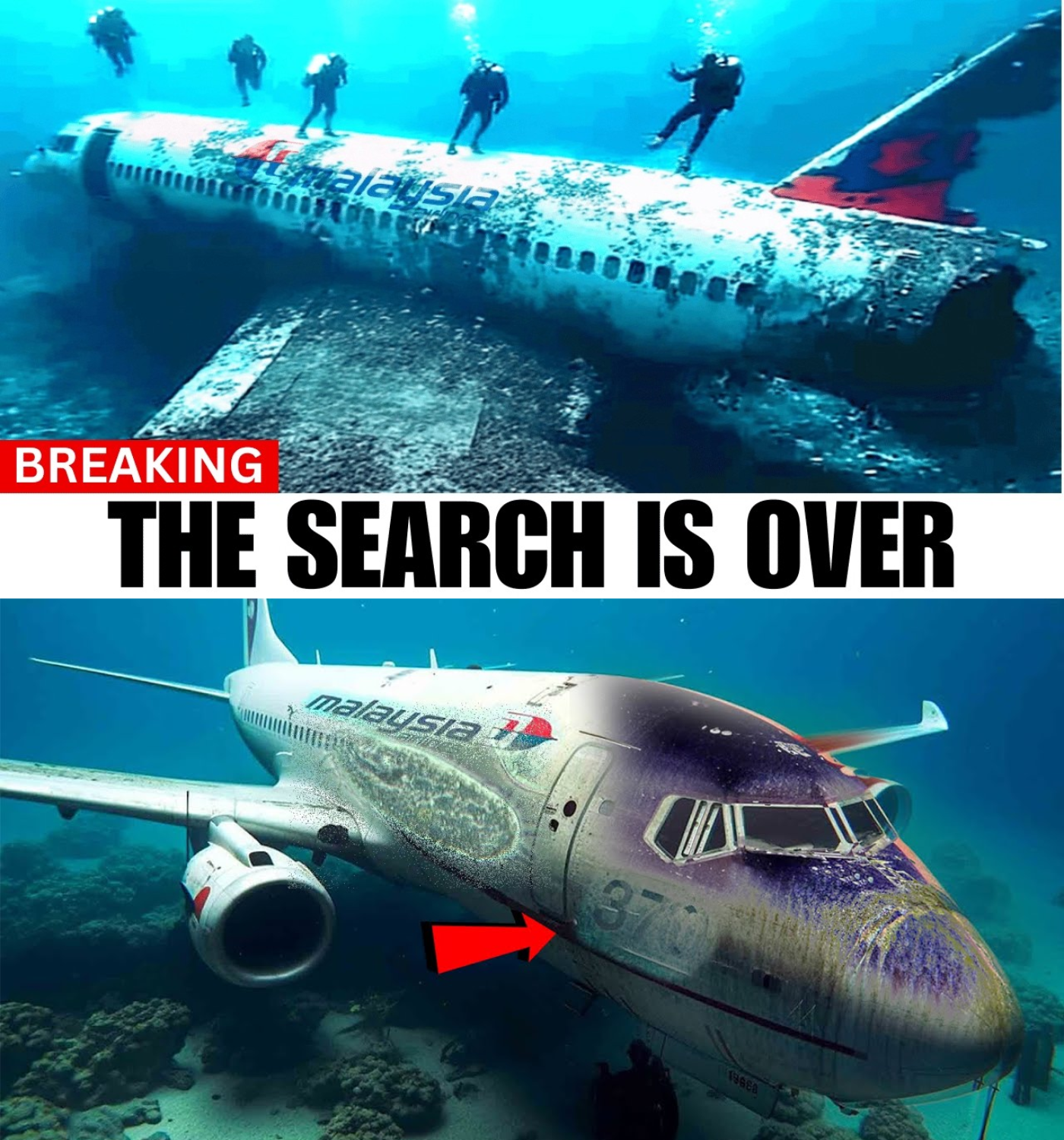After 11 Years, Underwater Drone Finally Found MH370 — The Search Is Over
On a fateful night in March 2014, the world was forever changed when Malaysian Airlines Flight MH370 vanished from the skies. A Boeing 777 carrying 239 souls departed from Kuala Lumpur, bound for Beijing, embarking on what should have been a routine overnight flight. Just moments after takeoff, the plane slipped silently into the night, leaving behind a void filled with confusion and heartache.
For the families of those on board, the disappearance was the beginning of an unimaginable nightmare. They watched helplessly as news reports flooded in, each one more bewildering than the last. No distress signal was sent, no emergency communications were made—just silence. As days turned into weeks, and weeks into months, hope began to wane, yet the search for answers persisted.

The search for MH370 became one of the largest and most expensive in aviation history, spanning continents and oceans. Governments, experts, and volunteers from over two dozen countries united in their quest for the truth. Ships scoured the vast southern Indian Ocean, while satellites and aircraft combed the waters, all in search of even the faintest clue. But despite the relentless efforts, the wreckage remained elusive, hidden beneath the waves of one of the planet’s most remote regions.
As the years passed, the story of MH370 evolved into a modern myth, a haunting tale that captivated millions worldwide. Speculation ran rampant—was it a hijacking, a mechanical failure, or something more sinister? Each theory became a fragile thread for families to grasp, a glimmer of hope amid the darkness of uncertainty. Yet, with every failed expedition, the weight of grief grew heavier.
Then, after more than a decade of searching, a breakthrough emerged. D Ocean Infiniti, a pioneering company in underwater exploration, deployed their state-of-the-art autonomous underwater drone, the Amada 7806, to a remote area off the coast of Western Australia. Equipped with high-resolution sonar and AI-driven navigation, the drone began its mission, tirelessly scanning the ocean floor.
When the drone finally transmitted its unmistakable sonar images, a silence fell over the world—a silence heavier than the ocean itself. The wreckage of MH370 had been found. The confirmation sent shockwaves through the hearts of the families who had endured years of limbo, waiting for answers that seemed forever out of reach.
For the families of the 239 passengers and crew, this discovery marked the end of a long and painful journey. It was not just a moment of closure; it was a reckoning with the truth of what had happened. The images revealed twisted metal, scattered debris, and the unmistakable outline of a jetliner’s fuselage. Each piece of wreckage was a testament to the lives lost, a reminder of the fragility of existence.
The news brought bittersweet relief to those who had spent years holding vigils, chasing leads, and oscillating between hope and despair. For them, the weight of uncertainty had been filled with emotional turbulence—the agony of not knowing, the endless replaying of what might have happened. Now, at last, there was an answer, however painful.
As investigators began to piece together the puzzle, they realized that the wreckage represented a time capsule—a physical record frozen in darkness and pressure. Every rivet, panel, and wire could hold clues to the aircraft’s final moments. The black boxes, if recovered intact, might finally explain why MH370 veered so far from its intended path.
The families, once haunted by unanswered questions, now had a tangible location to mourn. The wreckage resting on the ocean floor became more than just debris; it transformed into a solemn memorial for the lives lost. Each corroded rivet and twisted panel whispered of the plane’s final hours, a reminder of the enduring human cost of uncertainty.
In the wake of the discovery, the global community reflected on the implications of MH370’s journey. What began as an aviation tragedy evolved into a test of international diplomacy, requiring unprecedented cooperation between nations. The lack of clear answers had strained relations and fueled conspiracy theories, but now, with the wreckage found, there was an opportunity for unity rather than blame.
The search for MH370 had exposed vulnerabilities in global aviation systems, prompting regulatory bodies to introduce improvements in tracking, communication, and coordination. The recovery of the wreckage would accelerate these reforms, allowing experts to learn from fact rather than speculation. The tragedy, once seen as a failure of technology, became a catalyst for progress.
As the world learned of the wreckage’s location, it was a moment of remembrance for the passengers and crew who had become part of history. The story of MH370 was no longer an unanswered question; it was a reality that could be studied, measured, and mourned. The families could finally confront the truth, grounding their grief in the knowledge of what had transpired.
The discovery of MH370’s wreckage also highlighted the power of human determination. For 11 long years, families, scientists, and volunteers had refused to accept uncertainty. Their relentless pursuit of answers proved that no matter how vast the ocean or how long the odds, persistence could pierce even the darkest depths.
In the end, the story of MH370 stands as a testament to the indomitable spirit of humanity. It is a reminder that even in the face of overwhelming uncertainty, the quest for truth can lead to discovery and understanding. The wreckage of MH370 lies silent on the ocean floor, a poignant reminder of the lives lost and the enduring quest for answers.
As the world finally learns where MH370 came to rest, it is not just the end of a mystery; it is a moment of reflection, a shared experience that transcends borders and cultures. The legacy of MH370 will continue to resonate, reminding us of the fragility of life and the power of perseverance in the face of tragedy.


